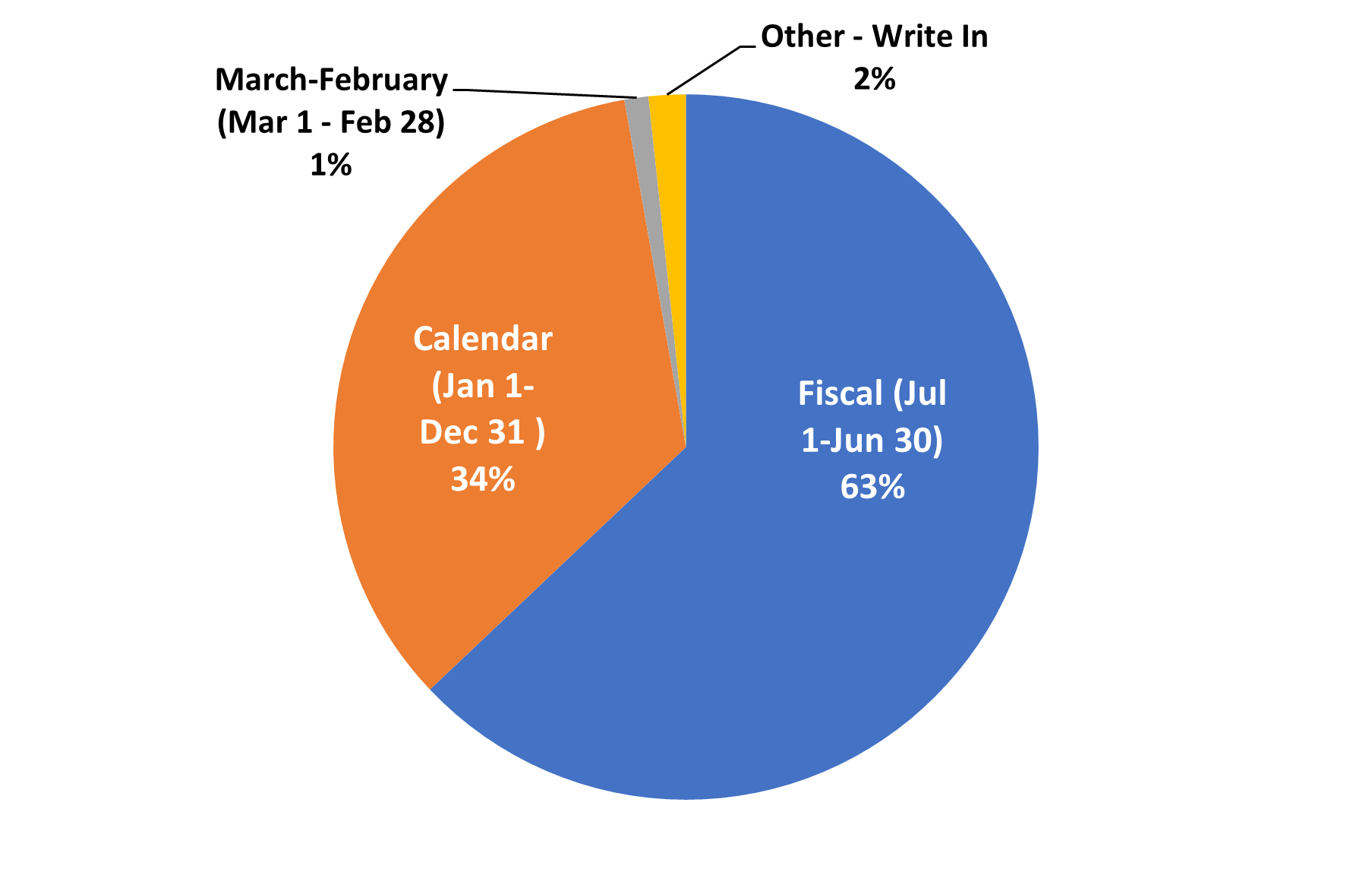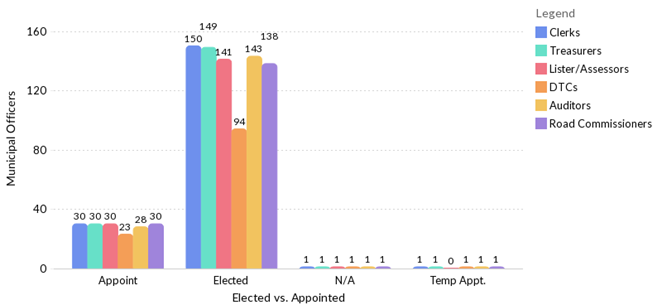Highlights of Your 2023 Compensation and Benefits Survey Responses
Every year since 1968, VLCT has collected compensation and benefits information from its member towns, cities, and villages and shared it with all members to provide insight as to how they compare with each other. In our latest such survey, conducted in the summer of 2023, we collected the most responses ever, despite a record number of communities dealing with the results of catastrophic flooding. We received 182 responses to our online survey and 171 payroll reports, with a total of 184 distinct municipalities participating.
Our goal for the survey is to provide hard to find contextual and comparison data in a format that is easy to use and understand. We organize all responses into the year’s report, to which every responding municipality receives free access both digitally and in a bound print. We know that municipalities rely on this resource to assess their pay rates, develop their budgets, and compare budgets and employee benefits with similar communities.
During the last five years we have radically redesigned the survey to make it easier for municipalities to contribute their data. For example, we ...
- moved from a manual process to an online survey platform,
- worked with NEMRC to incorporate automated payroll reports for their users,
- extended the time for participation,
- reformulated questions to reduce the size of the survey,
- added an iPad raffle incentive for participating, and
- incorporated more contextual data (such as hire and termination dates) to help communities compare positions more accurately.
These changes have increased participation in the survey and also the value of the data. If your municipality hasn’t responded in the last few years, we hope you will participate in 2024.
The timing of the annual survey is always a bit tricky given that two thirds of respondents operate on a July 1 to June 30 fiscal year and most municipalities begin their budget planning in the fall to prepare for their annual meeting (Town Meeting in March). Therefore, municipalities with a July-June budget cycle have a tight timeline after June 30 in which to provide their current year financial information. To ensure that our members have access to a robust dataset for their budget planning and salary setting endeavors in the fall, we leave the survey open through the first week of August and compile and format the data in a few short weeks to prepare it for the printer in October. Responding members receive free digital access to the report in October, and a bound print is mailed to their municipal office as soon as possible after that. We also make the report available in our web store for purchase by other members and non-members.
Below we share with you a few highlights aggregated from the 2023 report. Some of these items include comparisons with the 2022 report to illustrate changes in the data or items that have remained relatively static.
Population of Responding Municipalities
More than 79 percent of 2023’s 184 responding municipalities have between 169 and 3,000 residents, according to the 2020 U.S. Census. In the table below, the missing population ranges had no respondents.
| Population | Number of Responding Municipalities |
| 0-1,500 | 99 |
| 1,501-3,000 | 47 |
| 3,001-4,500 | 18 |
| 4,501-6,000 | 6 |
| 6,001-7,500 | 5 |
| 7,501-9,000 | 4 |
| 10,501-12,000 | 3 |
| 21,001-22,500 | 1 |
| 42,001-43,500 | 1 |
| Total | 184 |
Budget Cycles Used by Responding Municipalities
Of the municipalities that responded to our 2023 survey, nearly two thirds operate on a July 1 to June 30 fiscal year, one third are on a calendar year budget cycle, and a mere five individual members use a different budget cycle. This is represented in this pie chart:

Budgets and Payroll Changes
Operating and personnel budgets remained surprisingly static this year despite the uptick in annual cost of living increases provided to municipal employees. Additionally, average personnel budgets as a percentage of total operating budgets increased by about only one percent this year. However, it is important to note that these are not exclusively apples-to-apples comparisons because responding municipalities may change from year to year. In fact, 137 of 2023’s respondents had also provided their total operating budget and personnel data in 2022. Twenty-five of 2022’s respondents were unable to participate in the 2023 survey, whereas 57 of the 2023 respondents had not participated in 2022.
Average and Median Operating and Personnel Budgets
| Calculations | 2023 Personnel | 2023 Operating | 2022 Personnel | 2022 Operating |
| Average | $1,158,014.06 (36% of operating budget) | $2,975,163.67 | $1,099,622.53 (36% of operating budget) | $2,587,007.23 |
| Median | $528,614.00 (34% of operating budget) | $1,534,659.00 | $1,437,786.00 (33% of operating budget) | $432,552.00 |
| n= | 175 | 175 | 170 | 170 |
Statutory Officials
Of the 2023 respondents, 64 (28 percent) have a chief administrative officer (CAO) to lead municipal operations, whether a statutory municipal manager or a non-statutory municipal administrator. In 2023, one municipality added a municipal manager position and three added a municipal administrator position.
Most positions that are required by state law were still elected in 2023, as you can see from the Elected vs. Appointed chart below.

Stay tuned! In 2024 we will re-launch the municipal census (last conducted in 2014) to gather more in-depth information from members on the status of Vermont local government operations.


